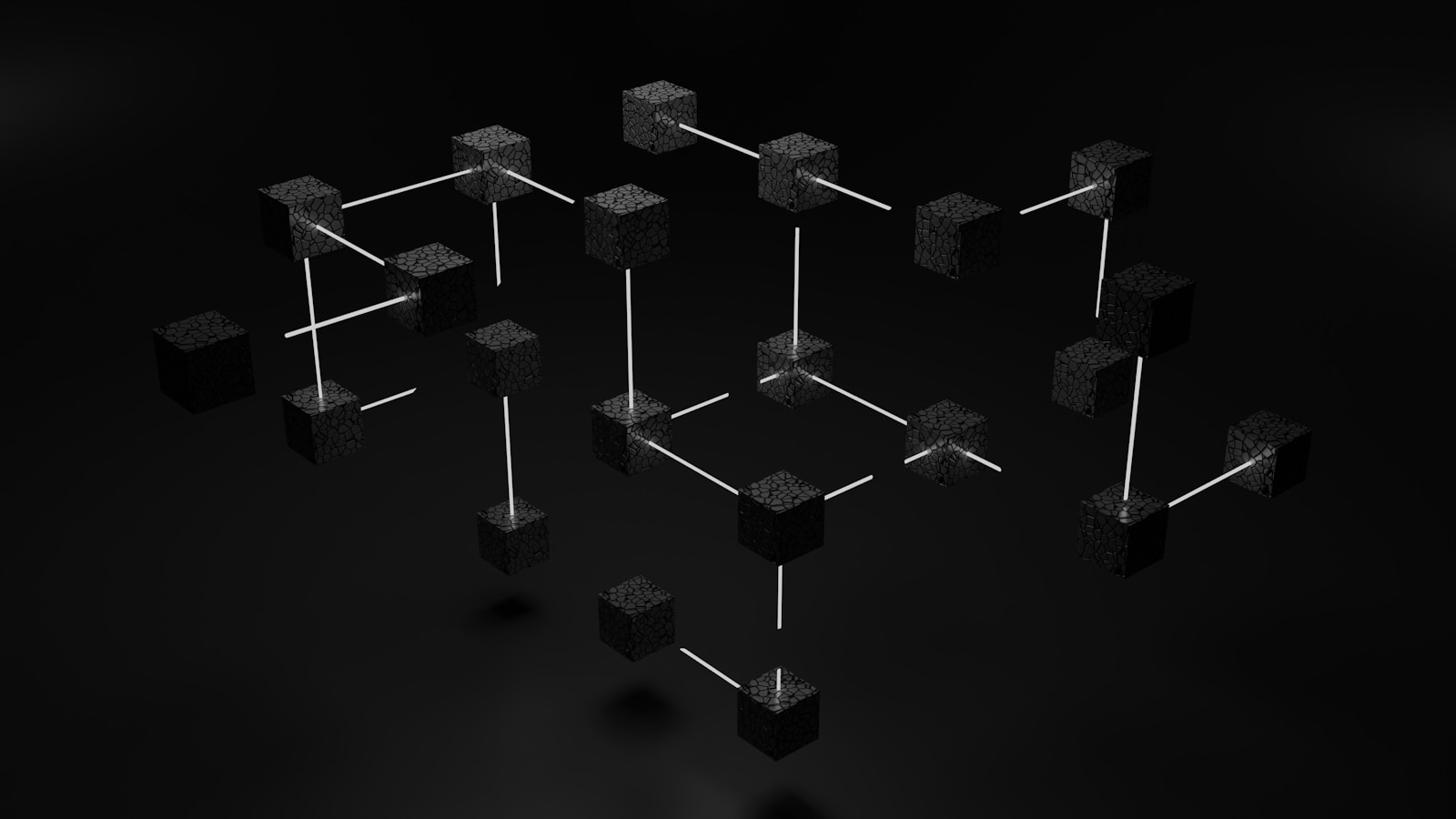Maintaining a full ledger history requires significant storage resources, which can slow down node synchronization and increase operational costs. Creating periodic snapshots of the ledger’s current condition allows nodes to reference a known valid checkpoint instead of replaying every transaction from inception. This method reduces data redundancy and optimizes resource usage by enabling selective pruning of outdated records without compromising security.
Snapshots capture the exact configuration of accounts, balances, and smart contract data at a specific point in time. By compressing this information efficiently, they minimize disk space consumption while preserving all necessary details for accurate validation. Integrating compression algorithms with checkpointing routines further enhances storage efficiency, making it feasible for lightweight clients to participate fully in network consensus.
Pruning historical data beyond the latest snapshot accelerates bootstrapping new participants and reduces the bandwidth needed during synchronization. Nodes can trust these checkpoints as reliable anchors, enabling faster recovery after outages or attacks. Overall, leveraging state snapshots combined with strategic pruning and compression forms a practical approach to scaling decentralized ledgers without sacrificing integrity or decentralization.
Checkpointing: blockchain state snapshots
Implementing periodic snapshots of a distributed ledger’s current condition significantly optimizes storage demands by allowing nodes to discard obsolete data safely. This approach ensures that the network maintains only relevant information while preserving integrity, which directly improves operational efficiency. For example, Ethereum 2.0 utilizes such mechanisms to prune historical blocks after confirming finalized states, reducing the burden on node operators.
Snapshotting facilitates faster synchronization by enabling new participants to download a recent ledger image rather than processing the entire transaction history. This method cuts down setup times dramatically and supports scalability as the system grows. Projects like Avalanche demonstrate this advantage by employing checkpoint markers that allow quick validation and rollback capabilities without needing full chain replay.
Technical aspects and benefits of snapshot implementation
State capture points involve saving comprehensive ledger data at specific intervals, including account balances, contract statuses, and other critical parameters. By anchoring these records cryptographically, networks guarantee consistency and prevent tampering with prior validated results. The resulting checkpoints form reliable reference frames that support pruning strategies, where older blocks are archived or discarded without compromising security.
In terms of resource management, maintaining a continuously expanding record is unsustainable for most participants due to storage limitations. Snapshot techniques alleviate this issue by allowing selective retention of essential data subsets while eliminating redundant historical transactions. Bitcoin’s Simplified Payment Verification (SPV) exemplifies this concept by permitting lightweight clients to verify payments using block headers rather than the full transaction set.
From a practical perspective, snapshots enhance fault tolerance in distributed ledgers by enabling swift recovery from inconsistencies or attacks targeting earlier segments of the chain. If corruption or forks occur beyond a checkpoint boundary, nodes can revert safely to the last known stable state without reprocessing the entire ledger history. This capability reinforces network robustness and minimizes downtime during unexpected events.
Ultimately, integrating regular state captures helps balance decentralization goals with infrastructure constraints through improved node accessibility and synchronization speed. It empowers validators and users alike to maintain up-to-date views efficiently while supporting long-term sustainability as transactional volume escalates. As demonstrated in diverse implementations across platforms like Polkadot and Cosmos, strategic snapshotting remains a cornerstone technique for optimizing ledger maintenance in complex decentralized ecosystems.
How Checkpoints Improve Security
Implementing checkpointing significantly enhances ledger security by creating verified data snapshots at specific intervals. These stored checkpoints act as trusted references, allowing nodes to validate the integrity of the current system without reprocessing the entire transaction history. This approach minimizes risks associated with long-range attacks and state manipulation, as any deviation from a known checkpoint can be immediately detected and rejected.
The process of compressing transaction logs into concise snapshots reduces storage demands while maintaining comprehensive records of past activities. By preserving periodic condensed images of the ledger’s condition, networks avoid redundant verification steps, which increases processing efficiency and decreases synchronization times for new participants joining the ecosystem.
Technical Advantages of State Snapshots for Network Resilience
Regularly saved system images enable faster recovery after node failures or cyber incidents by providing reliable rollback points. Instead of relying on extensive re-execution of all historical operations, validators can resume consensus from the latest checkpointed version, ensuring consistent continuity across distributed systems. This mechanism limits exposure to corrupted data propagation, thereby reinforcing overall robustness.
Checkpointing also facilitates pruning strategies that eliminate obsolete information while retaining critical milestones in ledger progression. Such selective preservation optimizes disk usage without sacrificing auditability since each snapshot corresponds to a cryptographically secured reference anchored in prior computations. For example, Ethereum’s transition to state snapshots has markedly lowered node hardware requirements while enhancing network participation diversity.
- Improved Verification: Nodes compare incoming states against trusted images rather than recalculating entire chains.
- Storage Efficiency: Compresses voluminous records into manageable archives through delta encoding and Merkle proofs.
- Attack Mitigation: Detects inconsistencies early by referencing immutable checkpoint hashes embedded in block headers.
The strategic insertion of these reference points into the chronological order of transactions prevents adversaries from exploiting gaps within historical validation processes. By anchoring system status periodically, it becomes infeasible to forge alternate chains that contradict established checkpoints without immediate detection by honest nodes. Such integrity guarantees form a backbone for trustless environments where independent verification is paramount.
This methodology not only safeguards against data tampering but also supports scalability goals by enabling lightweight clients to operate securely with minimal resource requirements. Users relying on partial storage can verify global consistency using checkpoint metadata alone, promoting wider accessibility and decentralization across diverse participant profiles. Hence, integrating secure archives into distributed ledgers is a foundational step toward resilient infrastructure capable of sustaining long-term operational security.
Implementing State Snapshots
To improve the performance of distributed ledgers, integrating checkpointing techniques significantly reduces the need to process the entire transaction history for each node. By periodically capturing concise records of the ledger’s condition, systems can prune older data and focus on recent changes, which directly enhances processing speed and network synchronization. This approach minimizes redundant computations and storage demands, leading to faster validation times and decreased resource consumption.
Applying compression algorithms to these snapshots further optimizes storage requirements. For example, differential compression methods capture only the variations between consecutive records rather than duplicating full copies, which conserves disk space while preserving essential information for accurate state reconstruction. Such techniques have been effectively employed in Ethereum’s archival nodes, where compact representations allow nodes to operate efficiently without sacrificing historical integrity.
Technical Insights into Efficient Snapshot Management
The balance between pruning obsolete data and maintaining enough historical context is key for long-term reliability. Implementations like Bitcoin’s UTXO set pruning demonstrate that discarding spent outputs combined with periodic checkpoint files helps maintain a lightweight yet verifiable record of ledger conditions. In practice, this means nodes do not require access to every block since genesis but instead rely on trusted snapshot points validated by consensus.
Real-world deployments emphasize modular architectures where snapshot generation runs asynchronously alongside normal ledger operations. This separation prevents bottlenecks during peak activity periods, ensuring consistent throughput. Moreover, incremental snapshots that build upon prior compressed states allow rapid recovery after node restarts or network interruptions without reprocessing all historical transactions. These strategies collectively contribute to scalable and resilient decentralized networks capable of handling growing user bases and transaction volumes.
Checkpoint Frequency Impact
Optimizing checkpoint intervals significantly enhances data compression and system efficiency by balancing between frequent snapshot creation and resource consumption. Increasing the frequency of state captures reduces the amount of historical data needed for validation, thereby enabling more effective pruning of obsolete entries. However, excessive checkpointing may introduce overhead, consuming bandwidth and storage without proportional benefits.
Conversely, infrequent checkpoints result in longer histories to process during synchronization or recovery, increasing computational load and latency. The ideal cadence depends on network throughput, node capabilities, and storage constraints–parameters that vary widely across implementations. Empirical studies show that moderate intervals often strike a practical balance between speed and resource economy.
Technical Analysis of Checkpointing Frequency
Compression gains stem from smaller incremental differences when snapshots are taken regularly. For example, Ethereum clients utilizing state trie snapshots every few thousand blocks achieve substantially reduced disk I/O compared to nodes relying solely on full history downloads. This regular interval allows pruning mechanisms to discard unnecessary transaction logs promptly without compromising data integrity.
In contrast, Bitcoin’s less frequent use of UTXO set checkpoints means nodes maintain larger datasets for extended periods, slowing initial sync times but reducing constant workload during steady-state operation. Such design choices illustrate trade-offs between immediate accessibility of compressed states and long-term maintenance costs associated with archival history.
- Short intervals: lower latency in state retrieval; higher processing demands
- Long intervals: reduced runtime overhead; increased synchronization delays
- Adaptive checkpointing: dynamic adjustment based on network conditions improves resilience
A notable case is Polkadot’s approach combining periodic snapshots with differential state encoding, which compresses updates effectively while maintaining quick recovery paths. By adjusting checkpoint frequency in response to network activity spikes, it minimizes redundant computation while preserving robustness against forks or rollbacks.
Ultimately, determining the optimal snapshot cadence requires analyzing node performance metrics alongside user experience factors such as startup time and storage availability. Employing adaptive algorithms that tune checkpoint generation dynamically can provide continuous improvement in operational efficiency without sacrificing historical completeness necessary for auditability and dispute resolution.
Troubleshooting Checkpoint Failures: Key Insights and Future Directions
Addressing failures in capturing network state snapshots requires a methodical approach focused on optimizing data compression algorithms and refining storage strategies. For instance, implementing delta compression between consecutive checkpoints can drastically reduce redundancy, easing the burden on disk space without sacrificing historical accuracy.
Historical pruning techniques must balance retention of critical ledger segments with aggressive elimination of obsolete data to maintain performance. A practical example is selectively preserving states associated with economically significant accounts while pruning less impactful transaction histories, thereby enhancing throughput and reducing I/O overhead.
Technical Recommendations and Broader Implications
- Adaptive Compression Schemes: Employ context-aware encoding that dynamically adjusts to transaction patterns, improving snapshot size efficiency and minimizing decompression latency during node synchronization.
- Hierarchical Storage Layers: Combine fast-access SSDs for recent checkpoints with cost-effective archival solutions for older ledger fragments to optimize retrieval speeds while controlling infrastructure costs.
- Incremental Pruning Policies: Develop heuristics to detect redundant or stale ledger segments automatically, enabling continuous cleaning without interrupting consensus mechanisms or risking data integrity.
The interplay between snapshot granularity and pruning aggressiveness directly influences network scalability and resilience. Overly coarse captures may impair rollback precision in error recovery scenarios, whereas excessive detail inflates resource consumption unnecessarily. This tension underscores the need for flexible frameworks adaptable to varying use cases, such as high-frequency trading versus decentralized finance platforms.
Looking forward, integrating machine learning models to predict optimal checkpoint intervals based on network activity could revolutionize how distributed ledgers manage their evolving histories. Furthermore, advances in distributed storage protocols promise more robust redundancy schemes that mitigate data loss risks inherent in single-node failures.





